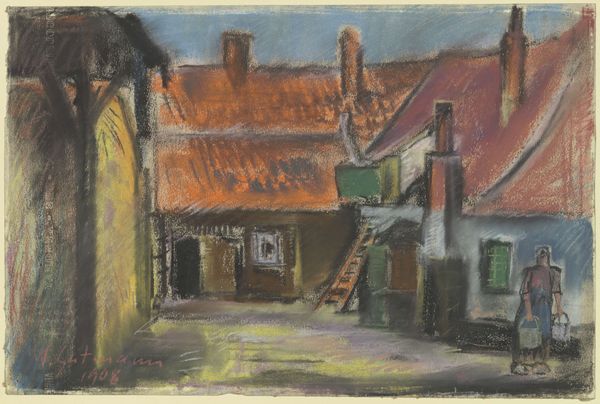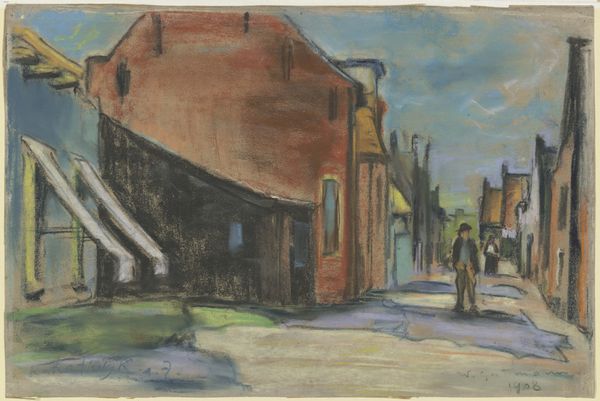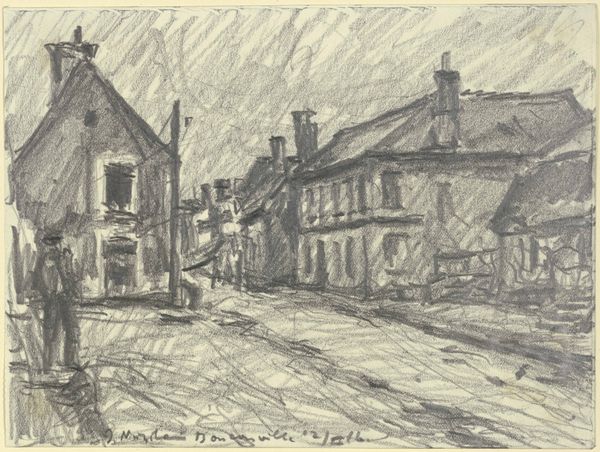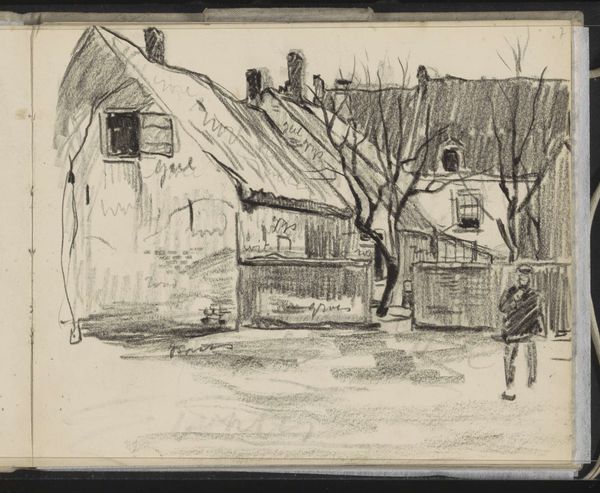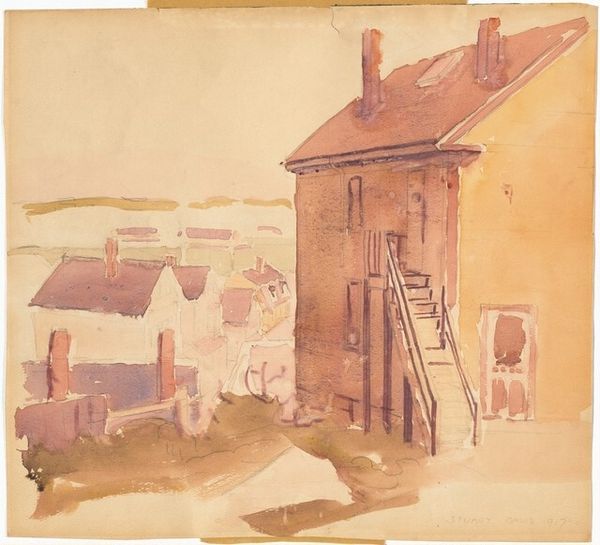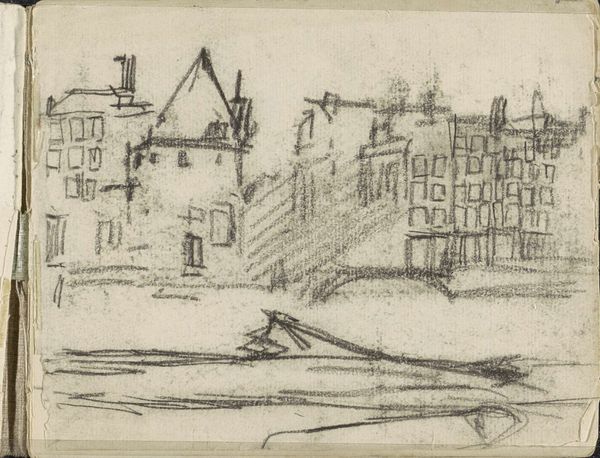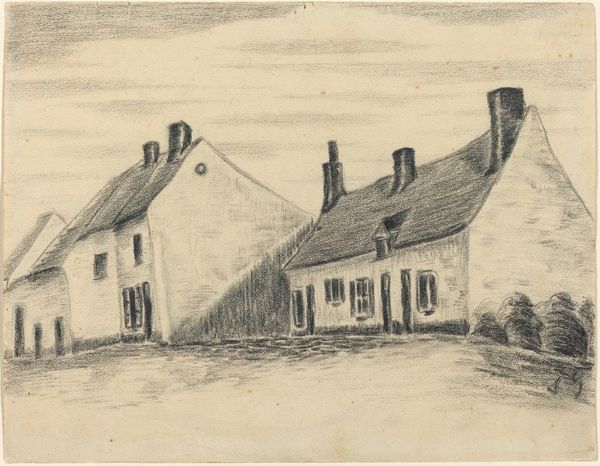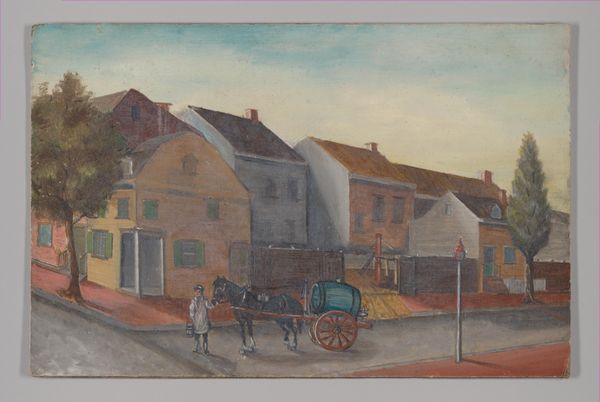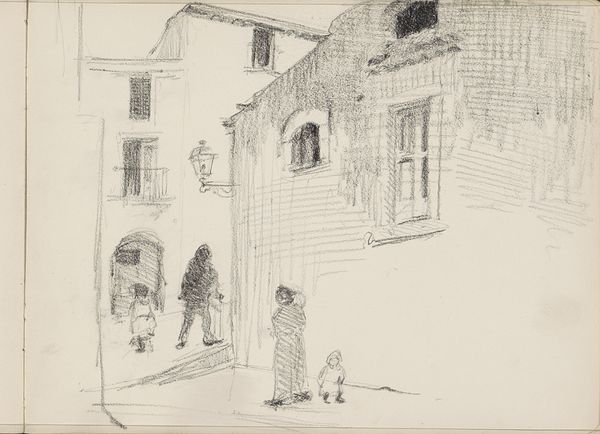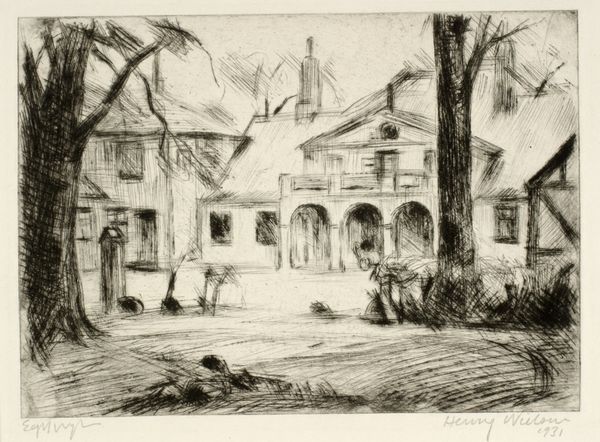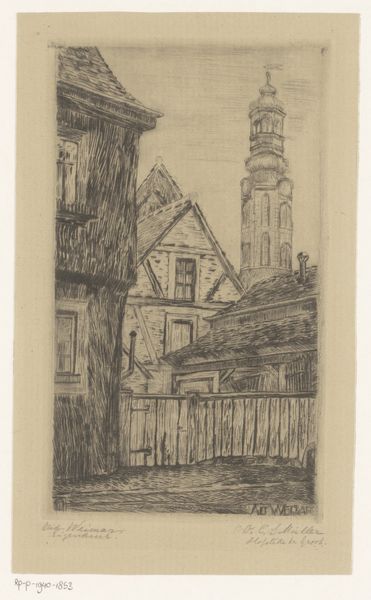
Copyright: Public Domain
Curator: Here we have Wilhelm Gutmann's "Straßenzug einer holländischen Stadt," or "Street in a Dutch Town," created in 1908. It's a coloured-pencil and watercolor drawing on paper, now residing here at the Städel Museum. Editor: There's something ethereal about it. The light feels muted, almost dreamlike. Are those shadows of people? They are barely there, like memories. Curator: Yes, note how Gutmann uses these blended colours, particularly the watercolour, to create atmospheric perspective. It flattens the space, but also provides depth by suggesting layers of activity. I am really interested in what this artwork suggests about labour during Gutmann's era: what purpose did coloured pencils fulfil, and why draw an everyday street rather than something "more elevated"? Editor: The muted tones contribute to this feeling of everyday life; soft blues, yellows, greys. Blue, particularly, has strong religious connotations. Its historical association with the Virgin Mary grants a sense of sanctity to this average cityscape. But I have to ask: is it really “average”? I would argue this seemingly quiet street scene has a sense of order or tranquility to it that could reflect stability within Dutch culture at the turn of the century. Curator: Well, even materials possess certain social associations. A common paper and simple pencils don't reflect the elite tastes that still held sway over much of art at the time. Gutmann seems less interested in crafting something refined and lasting than in recording something fleeting. Editor: Perhaps. Look at the houses. Their simplicity is striking. They're not grand, not ornate. Could their lack of adornment represent humility? Dutch Protestantism values that. The golden tones, like halos around the structures, may serve to elevate those values, placing them in line with civic pride and historical significance. Curator: I like that idea. He's taking common building materials and transforming them into a comment on larger society and economic concerns. What is accessible to people in 1908 as a part of life, from art to buildings, seems to be key. Editor: Yes, and reflecting on our conversation, perhaps that fleeting, dreamlike quality serves a crucial symbolic purpose. It asks us to reconsider the past and future through the subtle, constant shifts occurring in quotidian experiences. Curator: Absolutely. Thank you for illuminating these symbolic layers. Editor: And thank you for bringing materiality to the foreground of our vision.
Comments
No comments
Be the first to comment and join the conversation on the ultimate creative platform.
